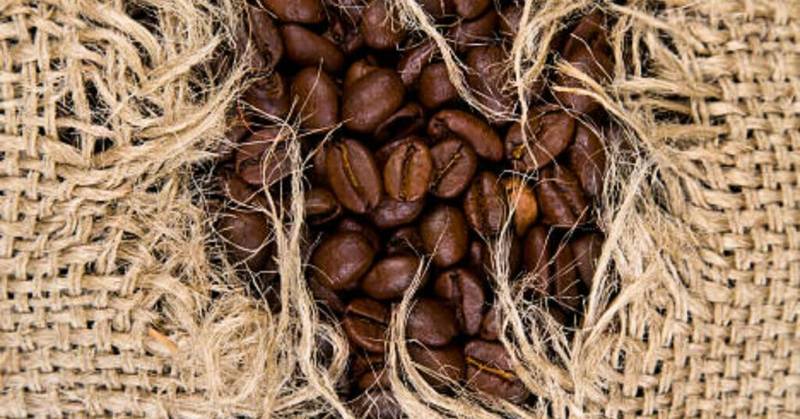Discover the secret behind the tiny punctures adorning coffee bean bags—a simple yet crucial feature that enhances your coffee experience.
These small holes serve as a gateway to a world of flavor.
They allow the freshly roasted beans to release built-up gases, preserving their aromatic essence while preventing the bag from bursting due to pressure.
These perforations not only ensure the beans freshness but also invite you to savor the rich, enticing aroma that awaits inside.
So, next time you encounter those alluring holes, know that they are your ticket to an exceptional coffee journey, one sip at a time.
Let’s further explore why coffee bean bags have holes.
Table of Contents
Why Do Coffee Bean Bags have Holes || Importance of Holes

Coffee bean bags have holes for a crucial reason: to preserve the beans’ freshness and flavor.
After roasting, coffee beans release gases like carbon dioxide.
If these gases accumulate inside a sealed bag, they can burst or affect the coffee’s taste.
The holes allow these gases to escape gradually while preventing oxygen from entering.
Oxygen can quickly deteriorate coffee.
So, those small openings ensure your beans stay aromatic and delicious, providing you with a delightful cup of coffee every time you brew.
It’s a simple yet effective way to maintain the quality of your favorite beans.
Coffee bean bags can develop a fishy odor if they have holes and are stored near strong-smelling items like fish or seafood, as the beans can absorb odors from their surroundings.
Storing roasted coffee beans in bags with holes is not ideal, as they can absorb moisture and odors. It’s best to use airtight containers for freshness and flavor preservation.
Those Holes keep your Coffee Fresh.
Coffee bean bags have holes, indeed, those tiny holes play a vital role in keeping your coffee fresh.
Simultaneously, they act as a barrier against oxygen, a notorious coffee flavour spoiler.
So, while they might seem inconspicuous, those little holes are the unsung heroes that ensure your coffee stays delightfully fresh until you’re ready to brew and savour its rich aroma and taste.
Degassing Holes on Coffee Bags are Meant to release CO2
Precisely, the degassing holes on coffee bags serve a vital purpose by facilitating the release of carbon dioxide (CO2).
After roasting coffee beans, they emit CO2 gas as a natural byproduct.
Without these holes, the accumulated gas could lead to bag ruptures or a decline in coffee quality due to trapped CO2.
These carefully designed openings allow the gas to escape gradually while preventing the entry of oxygen, preserving the coffee’s freshness and flavour.
These holes are specifically designed to manage the CO2 release, ensuring your coffee remains in optimal condition until you’re ready to brew and savour its rich taste and aroma.
Common Shapes and Sizes of Holes in Coffee Bags
Coffee bean bags have holes and typically feature one of two common shapes and sizes of holes:
Round Holes:
These are the most prevalent and widely recognized.
They are usually small, circular holes ranging from 1/8 inch (3 mm) to 3/8 inch (9 mm) in diameter.
Round holes are strategically placed on the front or back of the bag, and they serve the purpose of allowing the gradual release of carbon dioxide (CO2) gas while keeping oxygen out.
Square or rectangular holes:
Less common but still used in some coffee bag designs, square or rectangular holes are typically larger, ranging from 1/4 inch (6 mm) to 1/2 inch (12 mm) in width.
They function similarly to round holes, permitting the escape of CO2 while maintaining freshness.
The choice of hole shape and size may vary depending on the coffee brand’s packaging design and the specific needs of the coffee inside.
Regardless of the shape or size, these holes are essential for ensuring the coffee retains its flavour and quality until it reaches your cup.
Should all Coffee Bags have a Valve
All coffee bean bags have holes, depending on the packaging method and coffee type.
Coffee valves are typically used for freshly roasted coffee beans that emit carbon dioxide gas.
These valves allow the gas to escape without oxygen, preserving freshness.
Whole beans or freshly ground coffee oftenbenefits from valves.
However, for pre-ground coffee or coffee that has been degassed before packaging, a valve may not be necessary.
It’s essential to consider the specific needs of the coffee and packaging to determine whether a valve is required for optimal freshness and quality.
What If Coffee Bag Has No Valve?
If a coffee bag doesn’t have a valve, it doesn’t necessarily mean the coffee inside is of lower quality.
Coffee bags without valves are often used for coffee that has been pre-ground or degassed before packaging.
In such cases, the beans have already released most of their carbon dioxide (CO2) gas, reducing the need for a valve.
However, when you open a coffee bag without a valve, be mindful of its shelf life.
Without a valve to release residual CO2, the coffee may be more prone to staling due to oxygen exposure.
To maintain freshness, consider transferring the coffee to an airtight container after opening, ensuring it’s sealed securely to preserve the flavour and aroma over time.
How do you Open a Coffee Bag with a Valve?
Opening a coffee bag with a valve is a straightforward process:
Hold the Bag:
Hold the coffee bag firmly with one hand, making sure you have a good grip.
Locate the Valve:
Identify the one-way valve on the front or back of the bag.
It’s usually a small, round, or square patch made of a different material than the rest of the bag.
Cut or Tear:
You can either use a pair of scissors or tear along the dotted lines around the valve if provided.
Be careful not to cut too close to the valve to avoid damaging it.
After cutting:
After cutting or tearing the valve area, the bag is now open. You can reach inside to access the coffee beans.
Resealing:
If you want to reseal the bag, you can use clips, twist ties, or fold the top of the bag and secure it with a rubber band or a coffee bag clip to maintain freshness.
Remember that the valve is there to allow gases to escape while preventing air from entering the bag, keeping your coffee fresh.
Why do Coffee Bags have Holes?

Holes in bags are suitable. Coffee bags feature small holes for a crucial reason: to preserve the coffee’s freshness.
After roasting, coffee beans release gases, primarily carbon dioxide.
Without these holes, these gases would build up inside the sealed bag, potentially causing it to burst.
Additionally, trapped gases can lead to stale-tasting coffee.
The holes allow these gases to escape slowly, maintaining the beans’ flavor and aroma while preventing the bag from damage.
In essence, those tiny punctures ensure that when you brew your coffee, you experience the full, rich flavour and delightful aroma that freshly roasted beans have to offer.
Coffee Bag Materials
The best coffee bag materials effectively preserve the freshness and flavor of coffee beans while providing protection from external elements.
High-quality coffee bag materials typically include multi-layered structures that combine barrier properties, heat-sealing capability, and resistance to moisture and light.
Common materials used for coffee bags are foil, kraft paper, plastic laminates, and biodegradable options like compostable films.
These materials ensure that coffee remains free from exposure to oxygen, light, and humidity, which can compromise its taste and aroma.
The choice of coffee bag material often depends on factors like the type of coffee, branding preferences, and sustainability goals of the coffee producer or brand.
Why Do Coffee Bean Bags have Holes: FAQS
Do Coffee Bags with Holes Affect Freshness?
No, the holes in coffee bags help maintain freshness by allowing gas to escape while preventing outside air from entering.
Are the Holes in Coffee Bags for Aroma?
No, the holes are primarily for gas release, but they can also subtly contribute to aroma preservation.
Can I Reseal Coffee Bags with Holes?
Yes, use an airtight container after opening to maintain coffee freshness once the bag is opened.
Do All Coffee Bags Have Holes?
No, not all coffee bags have holes, but they are common in bags designed for freshly roasted beans.
Conclusion
In conclusion, coffee bean bags have holes for a simple yet crucial reason: to preserve the coffee’s freshness and flavor.
At the same time, they act as a protective barrier, preventing oxygen from entering and potentially spoiling the coffee.
So, while these holes may seem inconspicuous, they play an essential role in ensuring that your coffee remains aromatic and delicious, ready to deliver a delightful cup of brew every time you reach for it.







